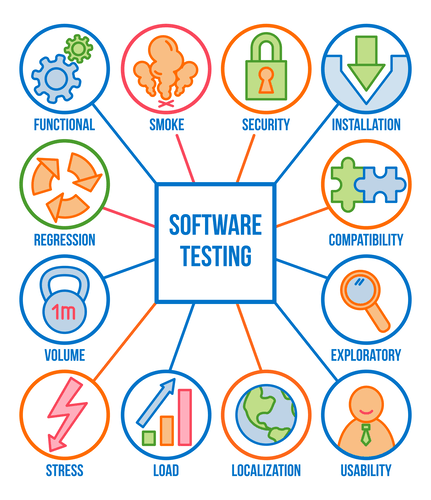When groups follow different levels of ALM, managers, builders and testers collaborate together to enhance the standard of the applying. Because ALM offers a set of clear steps, the development process is extra streamlined. Failure to observe the ALM course of (e.g., not deciding on requirements at the beginning or inconsistent testing practices) will result in a low-quality product and a nasty consumer experience. They also present methods to organize the requirement administration process, which helps ensure that organizations meet all enterprise aims whereas creating estimated timelines and value evaluation for any particular project.
It is important to notice that software lifecycle administration is carried out through the use of environment friendly built-in tools. These instruments facilitate necessities specification and compliance, product administration, precise coding, QA, and launch. ALM options offer end-to-end tools for the creation and administration of purposes. These instruments, often deployed as SaaS (software as a service) or cloud-based options, help handle the increased number of functions that enterprises depend on.
Application lifecycle administration (ALM) effectively integrates a quantity of disciplines and groups so they can work together effortlessly to deliver an excellent product. ALM helps a DevOps strategy, which matches hand-in-hand with Linux® containers. Containers give your team the underlying know-how needed for a cloud-native improvement style, and assist a unified surroundings for improvement, delivery, integration, and automation. After necessities for the applying or replace have been outlined and agreed to improvement can begin. Teams that follow the agile methodology for development could also be developing and deploying as typically as as soon as, and even a quantity of occasions, each day.
Despite it still being comparatively new, ALM is a extra conventional method that focuses on the complete software lifecycle, from conception to retirement. It makes use of processes, tools, and technologies to handle necessities, design, growth, testing, deployment, and operations. ALM, which stands for Application Lifecycle Management, is the specification, design, improvement, and testing of a software program utility through a system of individuals, instruments, and processes.
How Utility Lifecycle Management Works
While coding itself is often not a element of ALM, it’s nonetheless the guts of application improvement. Therefore, the source code administration capabilities have to be incorporated into the ALM tools. This way, one can assure the trackability of compliance with the requirements in the course of the exams and flaws correction. As quickly as teams build a full version of the application, it must undergo a series of checks to ensure it behaves as planned. This is an important step to uncover any bugs that can cause the appliance to break.
- We are seeing a convergence occurring in the Application Lifecycle Management (ALM) and Product Lifecycle Management (PLM) markets.
- This functionality can also remove confusion for corporations coping with a number of applications.
- Application Lifecycle Management (ALM) is a framework that helps groups handle the entire lifecycle of their purposes from creation to retirement.
- DevOps teams typically deploy steady supply (CD) pipelines to automate the method of sustaining and automating apps.
During the testing section, the testers’ position is to confirm that the application complies with the requirements outlined in the preliminary steps of the method. Its power lies in its seamless integration with different vital enterprise processes. Organizations can notice larger value all through the software program lifecycle by making a synergy between ALM and processes corresponding to project administration, buyer feedback, and IT operations. Similarly, Agile methodologies thrive inside an ALM framework with their iterative cycles and emphasis on steady suggestions.
Most utility development might happen previous to the initial deployment, with further development actions taking place post-deployment in response to changing person wants. Critical for delivering a quality product to your customers, utility lifecycle management is important for all software builders and stakeholders to know. In this information, we’ll cowl what the method is, what it involves, its significance in fashionable software development, and more. One key advantage is the streamlined coordination it provides throughout the complete improvement process, from conception to deployment and past. ALM fosters collaboration amongst cross-functional teams, ensuring a synchronized approach to necessities administration, design, improvement, testing, and maintenance. This cohesive workflow not solely enhances effectivity but in addition promotes better visibility into project progress.
What Are The Advantages Of Appication Lifecycle Administration (alm)?
ALM (Application Lifecycle Management) is a time period for integrating all these functions in one complete lifecycle. Basically, ALM tools create a well-structured and versatile setting for cooperation between departments to speed up and improve the effectiveness of the product improvement cycle and its specific phases. The varied instruments for ALM fall underneath totally different alm software meaning categories, such as version management, team communication, requirements management, testing tools, code management and maintenance tools. IBM® App Connect is an industry-leading integration solution that connects any of your applications and knowledge, no matter the place they reside.

By combining and organizing the elements of an software’s lifecycle, ALM improves product quality, optimizes productivity and eases the management and maintenance burden for associated services. ALM tools basically perform as project administration tools that help you deliver individuals and processes collectively. Look for a device that includes model control, the power for groups to communicate in real time, requirements administration options, estimation and project planning, supply code management, and take a look at management. While ALM covers the whole software lifecycle, SDLC solely focuses on the software program growth process. In different words, ALM contains all 5 levels of the app’s lifecycle — requirements, development, testing, deployment and maintenance — however SDLC solely contains one stage — improvement. At an early stage of an organization’s growth, the “just build something and get it out there” approach to software improvement turns into unsustainable.
With each step of the ALM course of, the applying matures and reaches nearer to its full potential – from design to implementation via testing and deployment. You can even conduct focus teams and product testing with customers on this stage. Having a well-thought-out plan for capturing and implementing the concepts and qualitative data coming from these groups shall be key. It helps you enhance the development process — and ensure your product is totally examined as you go.
What’s Utility Lifecycle Administration
Feedback ought to be passed again to the development team in a steady method. Designing, building, testing, and deploying the appliance can all be thought-about a part of the event part. Standardization of these processes results in the flexibility to automate governance.

The ALM software allows users to outline project necessities and develop person tales, which might then be prioritized, scheduled and damaged down into detailed tasks used for useful resource monitoring. Resource tracking analyzes how nicely a corporation makes use of its resources throughout the app’s lifecycle. ALM device users also can connect documents, screenshots and URLs to all artifacts and customize all graphs and stories in numerous formats — together with Adobe Acrobat and HTML. This stage involves maintaining the application up-to-date with bug fixes, characteristic updates, security patches, and other enhancements. It’s necessary to be proactive, as it may possibly greatly reduce the period of time spent fixing points down the line.
What Is Software Lifecycle Management (alm)?
Application lifecycle management is similar to SDLC, nevertheless it incorporates a larger vary of processes. Maintenance is frequently the longest stage of software lifecycle management, but it can additionally require the least participation from the event group if earlier steps have been effective. Development of the product begins as soon as the group agrees on the necessities. The product strikes from an thought and design to a real, working utility on this stage. At the beginning, the development group should break down the application necessities into pieces and phases to create a improvement plan. ALM — utility lifecycle administration — is the method of managing the life of a product from initial ideas by way of finish of life.
In this rapidly advancing technological world, ALM acts as both an anchor and compass, grounding groups in finest practices whereas pointing one of the best ways forward. For organizations aiming for excellence in their software endeavors, understanding and implementing robust ALM practices is not just beneficial — it’s crucial. As shown from its completely different levels, ALM isn’t just about creating software program. It’s about making certain a software’s journey, from its inception to its eventual sunset, is seamless, structured, and always aligned with its overarching aims. There is a separate design administration stage in a number of classifications that helps enhance software usability and, therefore, customers’ satisfaction ranges. Due to the distinction between the ALM’s five phases, the division of duties between teams is evident.

Commonly, ALM is divided into three phases, together with governance or necessities, improvement (with the QA & testing sub-stage included), and operation & maintenance, though their quantity and parts might vary. Let’s now contemplate some stages of utility lifecycle management intimately. Application lifecycle administration (ALM) and the software improvement life cycle (SDLC) are generally confused or used interchangeably because they both address software program development. The core distinction between the 2 is that SDLC primarily focuses on the application’s development phase. Since ALM supplies clear steps for the development process, there are a number of tools for each stage of the process. Each one serves a selected function to make one of many ALM levels more manageable in order to save time and assets.
It’s an integrated system comprising the individuals, processes, and instruments that guide a software software from its inception to its retirement. ALM can sometimes be confused with SDLC, or software growth lifecycle. While they’re comparable, Application Lifecycle Management refers to the complete lifecycle of an application, whereas SDLC focuses only on the event stage that we discussed above. In essence, SDLC can be considered a bit of the ALM course of, however doesn’t embody necessities gathering, planning, maintenance, etc.

Integrating ALM with IT operations ensures that the software, as quickly as developed, is effectively deployed, monitored, and maintained. This symbiotic relationship fosters quicker concern decision, smoother updates, and optimized efficiency. Deployment might sound simple, nevertheless it carries its personal set of challenges. Careful orchestration is crucial when deploying to a cloud platform, integrating with existing enterprise methods, or rolling out to utility shops. A phased rollout is commonly employed, allowing for real-world suggestions before a broader launch. Because ALM involves such a variety of variables, processes, people, functions, and more, dedicated instruments are usually used to make sure that every thing maintains organization, compliance, and communication between teams.
This course of refers back to the methodology used to construct high-quality software program. Software improvement teams give attention to the technology, testing and deployment of a specific piece of software. SDLC is considered one of the stages of utility lifecycle administration, which focuses on the software program growth process. ALM is a broader term that entails planning, creating, deploying and optimizing an application.
The time period is used within the context of software program applications, however it can be utilized in other kinds of techniques as properly. Continuous monitoring of utility efficiency, consumer behaviors, and feedback loops can present real-time insights, enabling groups to iterate and improve repeatedly. Application lifecycle administration software program instruments assist to provide visibility and transparency while selling communication and collaboration throughout the application lifecycle.
